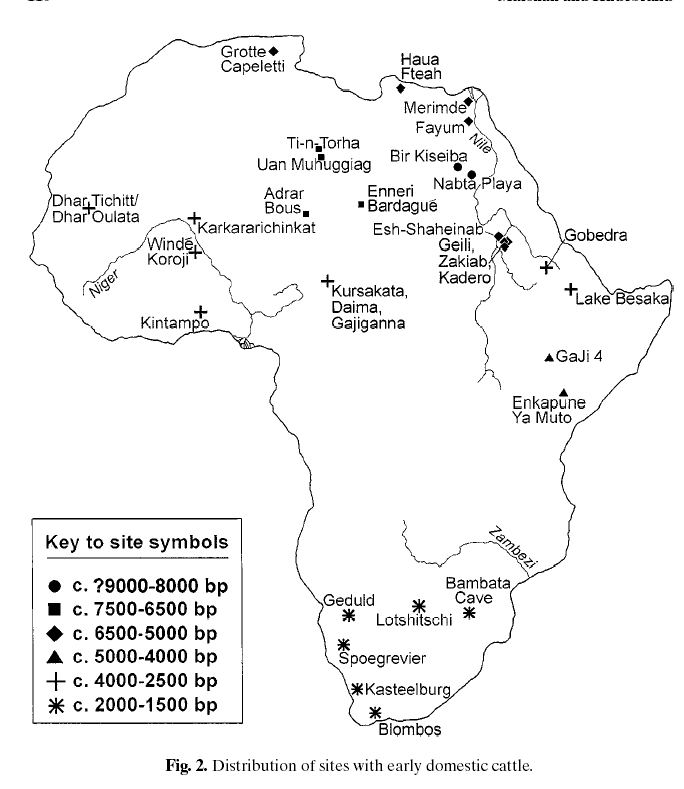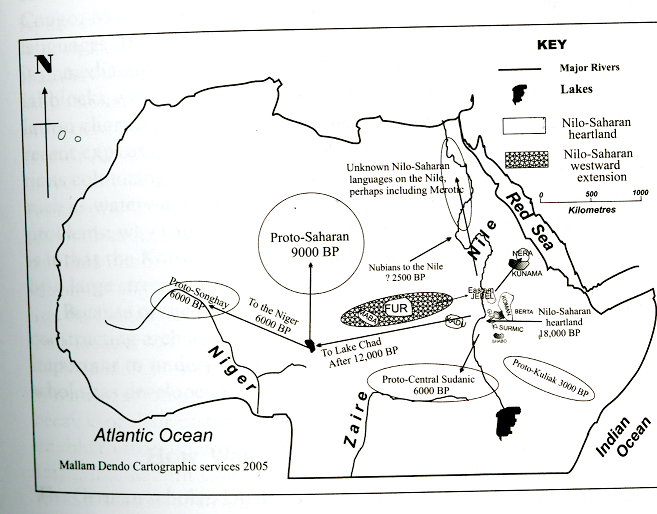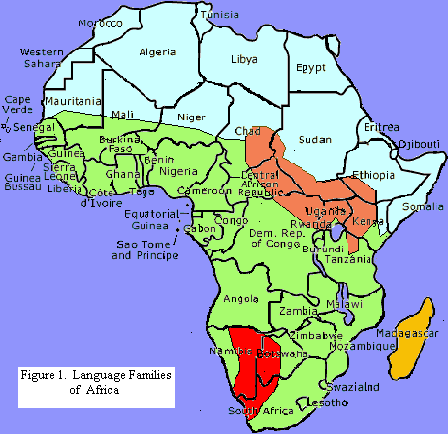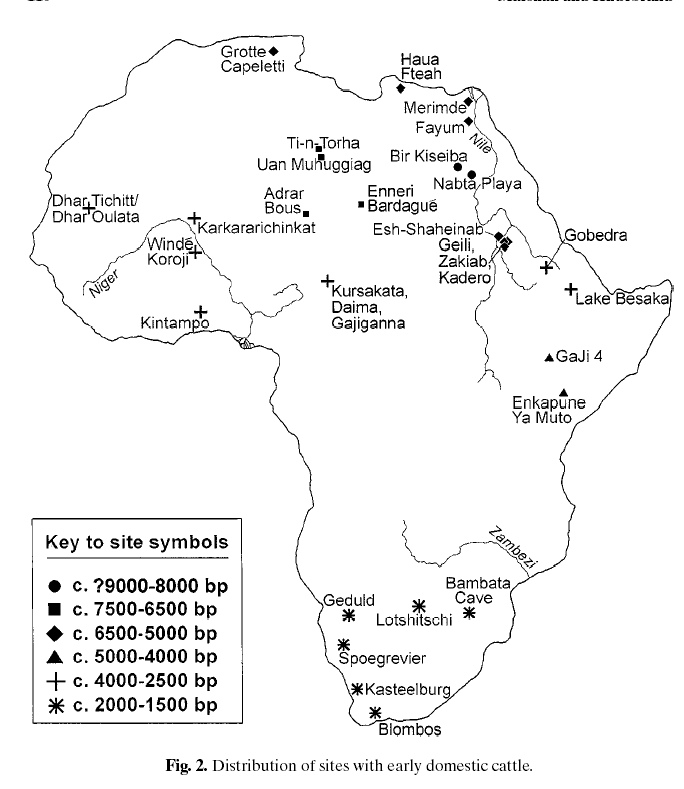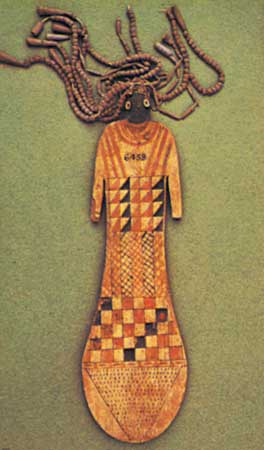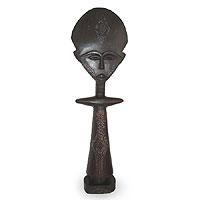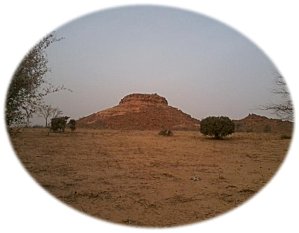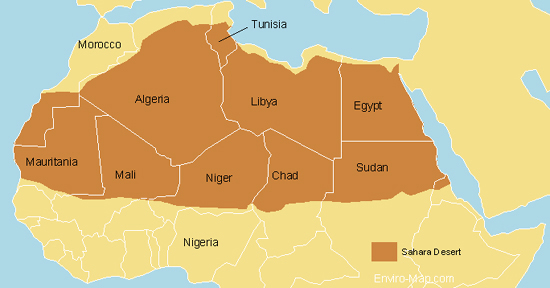Post by zarahan on Mar 22, 2014 21:07:58 GMT -5
They say that they came from ancient Egypt...What is the problem with accepting this truth!? Some of y'all treat this explanation like blasphemy or something.
No, not at all. Just that you have to provide better proof of your theory. We have such data as regards the broader East Africa area, but you make a specific claim about Egypt that is not strongly supported. I have no problem at all with the Asante etc etc being from Egypt, but just would like to see more credible proof to bolster the claim. See last point below for how Diop handled the problem.
Why are the linguistic affinities between ancient Egyptian and Niger-Congo languages blatantly lied about by leading Western linguist?
Perhaps but we now know that ancient Egyptian has numerous connections with the Chadic languages (Ehret 2002 et al), for example.
And the Indo-Aryan migrations were not out of the Caucasus.
What you have done is produce a picture map from somewhere, but where is the credible scholarship in support of this Indo-Aryan origin from the Caucasus? COuld be, but so far your supporting evidence is weak. I see more about central Asia here and there, but if you have more on Caucasus by all means bring it forward.
These people according to consistent anthropological evidence (much provided by you) were in fact broad featured "Negroid" African types.
Indeed the Natufians had a clear link with broad sub-Saharan African features, but I am not so sure they ALL looked like say Louis Armstrong in terms of broad features. It is safer to say they had a range of features including broad ones, and certainly that range is well within the range of other tropical Africans, or tropical African hybrids (which would pick up any Asiatic material). As for the Natufians being the FIRST to settle Anatolia I think that is too SPECIFIC a claim to make with current knowledge. With data out there on this particular matter so fragmentary- absolute, unequivocal statements can backfire on you. In such cases, you have to construct your theory like a boxing ring- with ropes flexible enough to absorb punishment and setbacks thrown at you, while allowing space for a hard-hitting counterattack- like Ali's classic "rope a dope" strategy.
You are better off saying that the Natufian culture was influential (many scholars agree, and that doesnt mean the influence has to be super earth-shattering) and their pioneering culture influenced others populations, including their successors that expanded out of and within the Levant. You have to build enough flexibility in there to accommodate possible Asiatic types, mixes, and other migrations, while preserving the core of your theory. As for Anatolia the data out there is mixed. We don't have a super clear picture. Certainly some cranial evidence shows tropical African elements there as well, but again, avoiding absolute sweeping, "paint myself in a corner" statements, in the absence of a good proof or at least solid stuff on the table to defend your thesis.
See:
egyptsearchreloaded.proboards.com/thread/641/charlie-bass-refuted-on-natufians
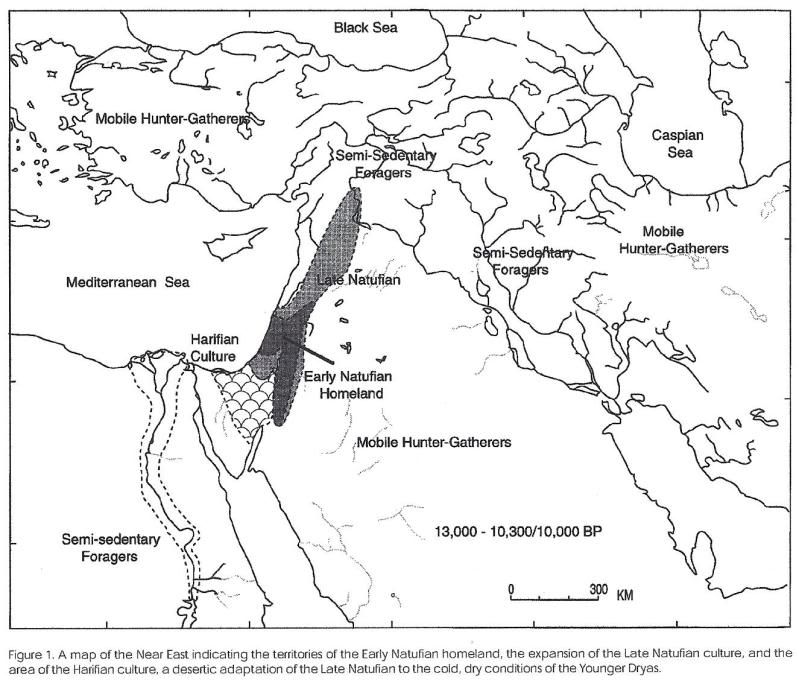
The hunters and gatherers shown in the map below however could likely represent an earlier split in the dual "Niger-Congo/"Afro-Asiatic" migration with the Ethiopic Africans (who already stayed closer along the red sea) proceeding the migration into Europe and parts of the Middle East.:
They "could" but then again, the other hunter-gatherers on the map could be contemporary Asiatic types. Which his why I say a sweeping absolute statement that the Natufians were the FIRST to inhabit Anatolia can be picked apart. Successors who looked in part like tropical Africans (who have a wide range of features) could just as well fit the bill.
This is the statement that so many people on ES have used to justify their rejection of the reliance of ancient Egyptian artwork to help with the discussion. Like I said for some strange reason the chain of "negroid" statuary seen on page one is never noted by scholars, and instead those who are not knowing are mislead to assume that most of the art depicts the gracile populations which characterizes the Horn of Africa.
I haven't seen that. Keita in that statement is rather criticizing the enemies of a balanced African bio-history and their misuse of pictures. If anything, many in ES get into picture swap battles rather than putting better evidence on the table. Keita doesn't reject pictures but notes how unreliable they can be at times. Pictures are a valid part of the evidence mix and can get a point across quickly, but don't rely on them. They need OTHER types of evidence to back them up for best results. Its a combined arms package.
You cannot let them do all of the thinking for us! You are giving Western scientist (not all have bad intentions) entirely too much power over this discussion.
Not really. I am skeptical of Western scientists and know they can be proven false. But they have to be confronted.
The constant claim of the opponents of a balanced African bio-history is that they are the experts, with the accurate facts, while the "crazy Afrocentrists" are making stuff up or misinterpreting things. These opponents have to be met and defeated on the same factual ground, and their posture as more virtuous and objective experts or fact-finders debunked. This means careful qualification of statements so they can be supported by data, or at least enough credible data to put forward a decent argument. Lets take that "the came from ancient Egypt" approach which has several weaknesses that opponents that pick apart.
Said opponents argue that, once again, the "crazies and cranks" like Diop are wrong, making things up with little proof. But as I pointed out to one of these critics- Diop never insisted that all his proposed movement was from Egypt specifically. Opponents build a strawman. Note in the discussion below how Diop QUALIFIED his approach- saying NOT Egypt per se, but "approximately in the Nile Valley" - a much broader zone to work with in building his notion. He also mentions the "Nile Valley Basin" - a zone that extends all the way into Ethiopia. See the difference? Diop knew a direct connection was difficult with current data so he broadened his framework into something more defensible. With that broader framework, modern scholarship lends support to many of his arguments.
-----------------------------------------------------------------
FROM ONE OF MY POSTS ELSEWHERE
1) Diop did not place heavy emphasis on "Inner Africa" and visible links with Dynastic Egypt, but in any event his concept of the movement of peoples from the general Nile Valley zone having an impact across the continent is not unreasonable in broader context, and is so supported by modern scholarship. In fact Macdonald quotes Diop:
"The idea that a central dispersal located approximately in the Nile Valley is worth consideration. In all likelihood.. [until ca 7000 BC].. Black mankind first lived in branches in the Nile basin before swarming out in successive spurts towards the interior of the continent."
----
Hardly earth-shattering stuff to "refute". Diop thought the idea was worthy of consideration, but placed little central emphasis on it. It is curious that Macdonald focuses on such a tangential issue while ignoring the core central themes of Diop's work- on Egypt IN Africa. And Diop first introduced the idea in 1955- repeated in 1974's Civilization or Barbarism. Diop at this time did not have access to the huge amount of scholarship on the Sahara and the Nile Valley that came after the early 1970s. But even so his dating is not that far off from modern scholars like Frank Yurco who noted that the Sahara acted as a "climatic pump"- alternatively pushing and pulling people into and out if the Nile Valley and larger region, or from 2006- Kruper and Kropelin's "Climate Controlled Holocene Occupation of the Sahara". In fact Kruper and Kropelin 2006 show- QUOTE:
"after the sudden onset of humid conditions at 8500 B.C.E. to the exodus resulting from gradual desiccation since 5300 B.C.E. Southward shifting of the desert margin helped trigger the emergence of pharaonic civilization along the Nile, influenced the spread of pastoralism throughout the continent, and affects sub-Saharan Africa to the present day."
--Kruper and Kropelin 2006. Climate Controlled Holocene Occupation of the Sahara.
Diop was not active in the field to access late 1980s data - having died in 1986 and much of his published work being earlier reprints, but modern scholarship does indeed show that the Nile Valley zone, including the overall Saharan zone incorporating parts of the Nile Valley, is part of the climatic process that helped shape the African continent, including dispersal of peoples. Thus in broader context it could be said that Diop is not that far off from modern scholarship's findings. Yoruba tribes do not have to be shown moving from Memphis to Ghana to establish the movement of peoples West from the all-important Sahara, including pastoralists, circa Diop's Nilo-Saharan zone 7000BC. Note that Diop places the radiator of movement "approximately in the Nile Valley" - this would incorporate somewhat the broad Saharan zone adjacent to, surrounding or overlapping said Nile Valley. Modern studies have refined this to the broad Saharan belt that included the Nile Valley but Diop's general ranging is not greatly off the mark.
END EXCERPT
----------------------------------------------------------------
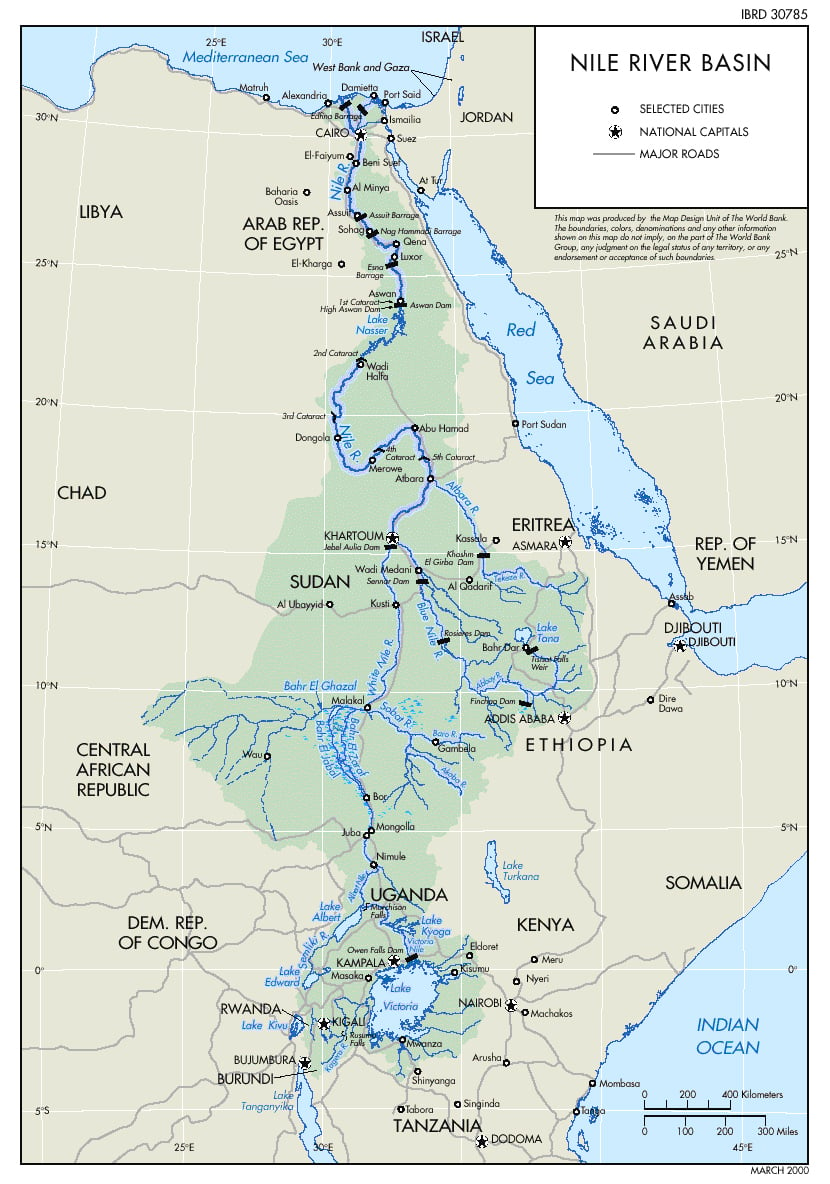
As you can see Diop built enough qualifications and flexibility into the concept to absorb new knowledge, findings and attacks. This is how you have to construct your arguments. On relatively friendly forums like Reloaded it is not so critical, but in other harsher venues, where you must hammer through and defend against numerous attackers and critics, many playing the "we are the experts" card, careful construction pays dividends in meeting all contendas. Diop by the way was wrong on some things because we now have better info than he had 40 years ago. But it could be well argued that some of his general concepts have been WELL supported.
No, not at all. Just that you have to provide better proof of your theory. We have such data as regards the broader East Africa area, but you make a specific claim about Egypt that is not strongly supported. I have no problem at all with the Asante etc etc being from Egypt, but just would like to see more credible proof to bolster the claim. See last point below for how Diop handled the problem.
Why are the linguistic affinities between ancient Egyptian and Niger-Congo languages blatantly lied about by leading Western linguist?
Perhaps but we now know that ancient Egyptian has numerous connections with the Chadic languages (Ehret 2002 et al), for example.
And the Indo-Aryan migrations were not out of the Caucasus.
What you have done is produce a picture map from somewhere, but where is the credible scholarship in support of this Indo-Aryan origin from the Caucasus? COuld be, but so far your supporting evidence is weak. I see more about central Asia here and there, but if you have more on Caucasus by all means bring it forward.
These people according to consistent anthropological evidence (much provided by you) were in fact broad featured "Negroid" African types.
Indeed the Natufians had a clear link with broad sub-Saharan African features, but I am not so sure they ALL looked like say Louis Armstrong in terms of broad features. It is safer to say they had a range of features including broad ones, and certainly that range is well within the range of other tropical Africans, or tropical African hybrids (which would pick up any Asiatic material). As for the Natufians being the FIRST to settle Anatolia I think that is too SPECIFIC a claim to make with current knowledge. With data out there on this particular matter so fragmentary- absolute, unequivocal statements can backfire on you. In such cases, you have to construct your theory like a boxing ring- with ropes flexible enough to absorb punishment and setbacks thrown at you, while allowing space for a hard-hitting counterattack- like Ali's classic "rope a dope" strategy.
You are better off saying that the Natufian culture was influential (many scholars agree, and that doesnt mean the influence has to be super earth-shattering) and their pioneering culture influenced others populations, including their successors that expanded out of and within the Levant. You have to build enough flexibility in there to accommodate possible Asiatic types, mixes, and other migrations, while preserving the core of your theory. As for Anatolia the data out there is mixed. We don't have a super clear picture. Certainly some cranial evidence shows tropical African elements there as well, but again, avoiding absolute sweeping, "paint myself in a corner" statements, in the absence of a good proof or at least solid stuff on the table to defend your thesis.
See:
egyptsearchreloaded.proboards.com/thread/641/charlie-bass-refuted-on-natufians

The hunters and gatherers shown in the map below however could likely represent an earlier split in the dual "Niger-Congo/"Afro-Asiatic" migration with the Ethiopic Africans (who already stayed closer along the red sea) proceeding the migration into Europe and parts of the Middle East.:
They "could" but then again, the other hunter-gatherers on the map could be contemporary Asiatic types. Which his why I say a sweeping absolute statement that the Natufians were the FIRST to inhabit Anatolia can be picked apart. Successors who looked in part like tropical Africans (who have a wide range of features) could just as well fit the bill.
This is the statement that so many people on ES have used to justify their rejection of the reliance of ancient Egyptian artwork to help with the discussion. Like I said for some strange reason the chain of "negroid" statuary seen on page one is never noted by scholars, and instead those who are not knowing are mislead to assume that most of the art depicts the gracile populations which characterizes the Horn of Africa.
I haven't seen that. Keita in that statement is rather criticizing the enemies of a balanced African bio-history and their misuse of pictures. If anything, many in ES get into picture swap battles rather than putting better evidence on the table. Keita doesn't reject pictures but notes how unreliable they can be at times. Pictures are a valid part of the evidence mix and can get a point across quickly, but don't rely on them. They need OTHER types of evidence to back them up for best results. Its a combined arms package.
You cannot let them do all of the thinking for us! You are giving Western scientist (not all have bad intentions) entirely too much power over this discussion.
Not really. I am skeptical of Western scientists and know they can be proven false. But they have to be confronted.
The constant claim of the opponents of a balanced African bio-history is that they are the experts, with the accurate facts, while the "crazy Afrocentrists" are making stuff up or misinterpreting things. These opponents have to be met and defeated on the same factual ground, and their posture as more virtuous and objective experts or fact-finders debunked. This means careful qualification of statements so they can be supported by data, or at least enough credible data to put forward a decent argument. Lets take that "the came from ancient Egypt" approach which has several weaknesses that opponents that pick apart.
Said opponents argue that, once again, the "crazies and cranks" like Diop are wrong, making things up with little proof. But as I pointed out to one of these critics- Diop never insisted that all his proposed movement was from Egypt specifically. Opponents build a strawman. Note in the discussion below how Diop QUALIFIED his approach- saying NOT Egypt per se, but "approximately in the Nile Valley" - a much broader zone to work with in building his notion. He also mentions the "Nile Valley Basin" - a zone that extends all the way into Ethiopia. See the difference? Diop knew a direct connection was difficult with current data so he broadened his framework into something more defensible. With that broader framework, modern scholarship lends support to many of his arguments.
-----------------------------------------------------------------
FROM ONE OF MY POSTS ELSEWHERE
1) Diop did not place heavy emphasis on "Inner Africa" and visible links with Dynastic Egypt, but in any event his concept of the movement of peoples from the general Nile Valley zone having an impact across the continent is not unreasonable in broader context, and is so supported by modern scholarship. In fact Macdonald quotes Diop:
"The idea that a central dispersal located approximately in the Nile Valley is worth consideration. In all likelihood.. [until ca 7000 BC].. Black mankind first lived in branches in the Nile basin before swarming out in successive spurts towards the interior of the continent."
----
Hardly earth-shattering stuff to "refute". Diop thought the idea was worthy of consideration, but placed little central emphasis on it. It is curious that Macdonald focuses on such a tangential issue while ignoring the core central themes of Diop's work- on Egypt IN Africa. And Diop first introduced the idea in 1955- repeated in 1974's Civilization or Barbarism. Diop at this time did not have access to the huge amount of scholarship on the Sahara and the Nile Valley that came after the early 1970s. But even so his dating is not that far off from modern scholars like Frank Yurco who noted that the Sahara acted as a "climatic pump"- alternatively pushing and pulling people into and out if the Nile Valley and larger region, or from 2006- Kruper and Kropelin's "Climate Controlled Holocene Occupation of the Sahara". In fact Kruper and Kropelin 2006 show- QUOTE:
"after the sudden onset of humid conditions at 8500 B.C.E. to the exodus resulting from gradual desiccation since 5300 B.C.E. Southward shifting of the desert margin helped trigger the emergence of pharaonic civilization along the Nile, influenced the spread of pastoralism throughout the continent, and affects sub-Saharan Africa to the present day."
--Kruper and Kropelin 2006. Climate Controlled Holocene Occupation of the Sahara.
Diop was not active in the field to access late 1980s data - having died in 1986 and much of his published work being earlier reprints, but modern scholarship does indeed show that the Nile Valley zone, including the overall Saharan zone incorporating parts of the Nile Valley, is part of the climatic process that helped shape the African continent, including dispersal of peoples. Thus in broader context it could be said that Diop is not that far off from modern scholarship's findings. Yoruba tribes do not have to be shown moving from Memphis to Ghana to establish the movement of peoples West from the all-important Sahara, including pastoralists, circa Diop's Nilo-Saharan zone 7000BC. Note that Diop places the radiator of movement "approximately in the Nile Valley" - this would incorporate somewhat the broad Saharan zone adjacent to, surrounding or overlapping said Nile Valley. Modern studies have refined this to the broad Saharan belt that included the Nile Valley but Diop's general ranging is not greatly off the mark.
END EXCERPT
----------------------------------------------------------------

As you can see Diop built enough qualifications and flexibility into the concept to absorb new knowledge, findings and attacks. This is how you have to construct your arguments. On relatively friendly forums like Reloaded it is not so critical, but in other harsher venues, where you must hammer through and defend against numerous attackers and critics, many playing the "we are the experts" card, careful construction pays dividends in meeting all contendas. Diop by the way was wrong on some things because we now have better info than he had 40 years ago. But it could be well argued that some of his general concepts have been WELL supported.


